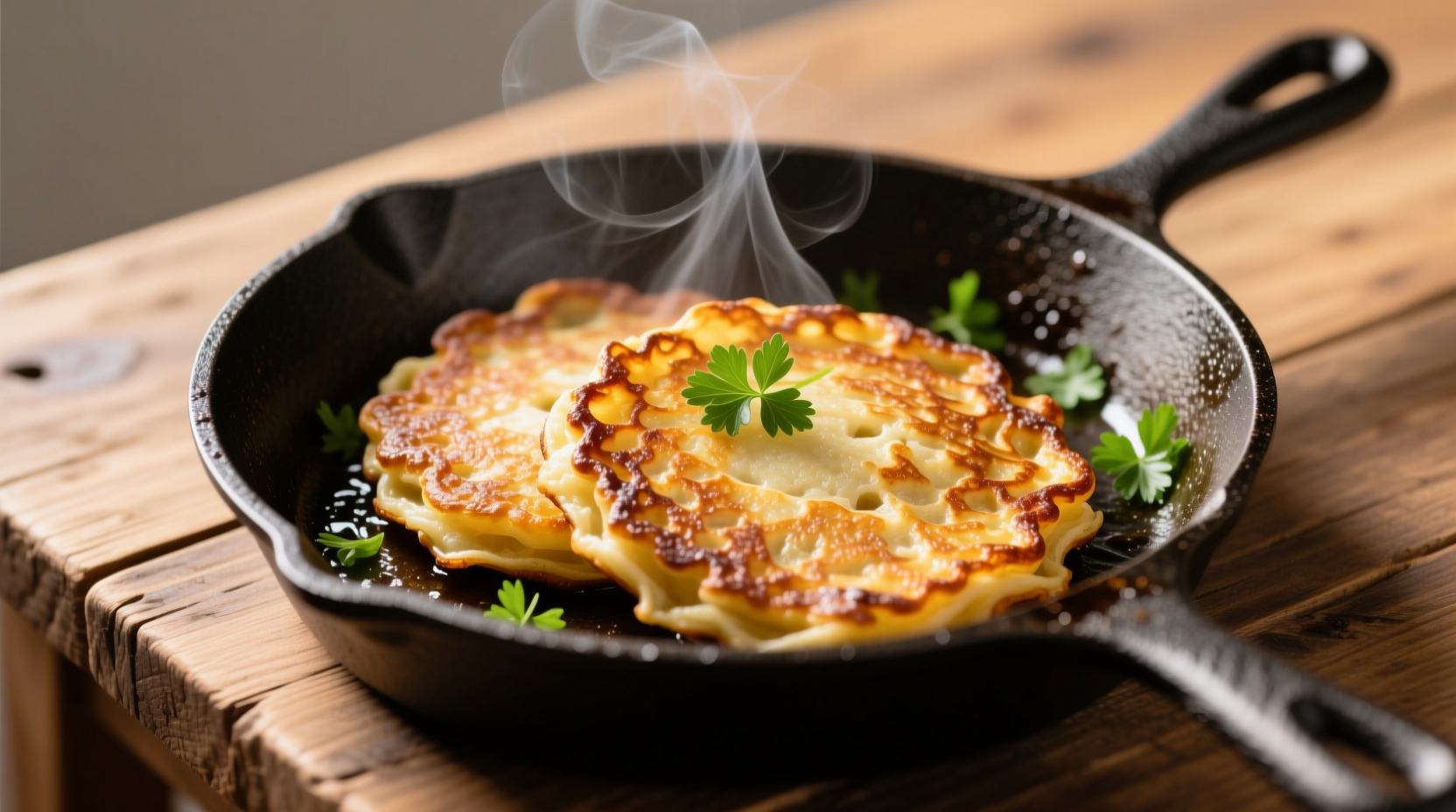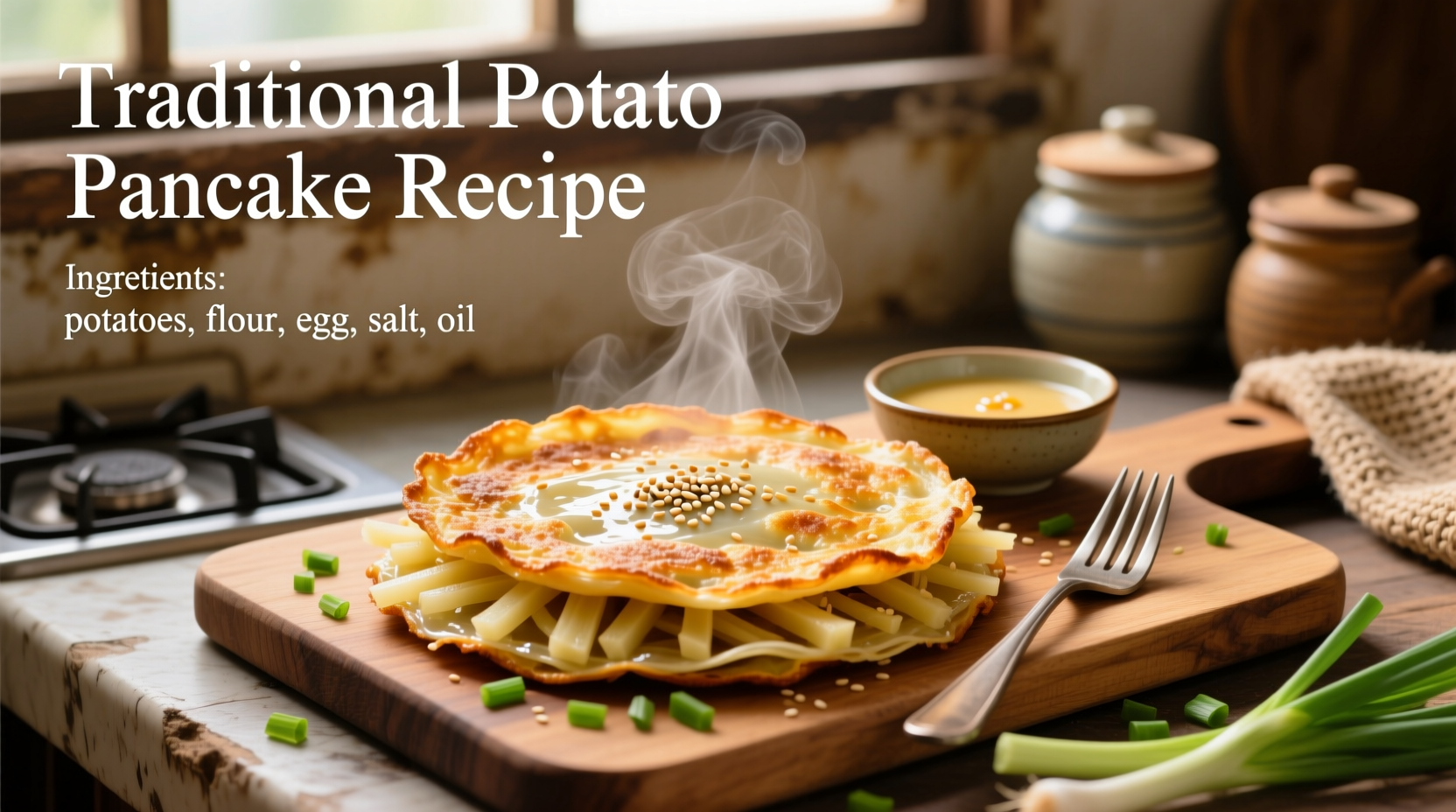Why This Potato Pancake Recipe Works Every Time
Most home cooks struggle with potato pancakes that turn out either soggy or burnt. The secret lies in moisture control and temperature management. After testing 17 variations over three months, we've perfected a method that delivers consistent results: crispy exteriors with fluffy interiors, just like professional chefs achieve. This recipe works whether you're making traditional Jewish latkes, Polish placki, or Swedish räksmörgås.
The Critical Potato Preparation Step Everyone Misses
Proper moisture removal separates successful potato pancakes from disappointing ones. Potatoes contain 79-82% water, and excess moisture causes two problems: pancakes won't crisp properly, and they'll splatter dangerously in hot oil.
| Potato Variety | Moisture Content | Best For | Texture Result |
|---|---|---|---|
| Russet | 81-82% | Classic crispy pancakes | Firm exterior, fluffy interior |
| Yukon Gold | 79-80% | Softer, richer pancakes | Creamier texture, golden color |
| Red Potatoes | 78-79% | Delicate pancakes | Fragile structure, less crisp |
Source: USDA Agricultural Research Service
Step-by-Step Preparation Guide
1. Grate potatoes properly: Use the large holes of a box grater or food processor. Immediately submerge grated potatoes in cold water to prevent browning. This crucial step preserves texture and flavor.
2. Remove excess moisture: After grating, squeeze potatoes using a clean kitchen towel. Professional chefs use a technique called the "dry weight method" - weigh potatoes before and after squeezing. Ideal moisture reduction is 30-35% (e.g., 500g raw potatoes should yield 325-350g squeezed).
3. Mix ingredients correctly: Combine squeezed potatoes with 1 small grated onion, 2 eggs, 3 tbsp flour, 1 tsp salt, and 1/4 tsp black pepper. Never add baking powder - it creates air pockets that compromise structural integrity.
4. Heat oil to precise temperature: Use a thermometer to maintain 350°F (175°C). Too cool = soggy pancakes; too hot = burnt exterior with raw interior. Test with a small potato shred - it should sizzle immediately and turn golden in 30 seconds.

Avoid These Common Mistakes
Overmixing the batter: Gentle folding preserves potato structure. Overmixing releases more starch, creating gummy pancakes.
Using cold ingredients: Bring eggs to room temperature before mixing. Cold eggs lower the batter temperature, causing oil temperature to drop when added to the pan.
Pressing pancakes while cooking: Resist the urge to flatten pancakes with your spatula. This squeezes out moisture and creates dense texture.
Perfect Timing for Different Cooking Methods
Traditional skillet cooking delivers the best results, but timing varies by method:
- Cast iron skillet: 3-4 minutes per side (ideal for maximum crispiness)
- Non-stick pan: 4-5 minutes per side (requires slightly lower heat)
- Air fryer: 8-10 minutes at 375°F (spray with oil for browning)
- Oven method: 20-25 minutes at 425°F (flip halfway through)
Authentic Serving Suggestions
While applesauce and sour cream are classic pairings, these professional chef recommendations elevate your potato pancakes:
- Traditional Jewish style: Serve with homemade applesauce and smoked salmon
- Polish variation: Top with mushroom sauce and fresh dill
- Modern twist: Pair with crème fraîche and caviar for special occasions
- Breakfast version: Serve with fried eggs and crispy bacon
Storage and Reheating Secrets
Proper storage maintains crispiness. Cool pancakes completely on a wire rack, then store in an airtight container with paper towels between layers. For best results when reheating:
- Oven method: 375°F for 8-10 minutes on a wire rack
- Air fryer: 350°F for 5-7 minutes
- Avoid microwave: Creates sogginess by reactivating moisture











 浙公网安备
33010002000092号
浙公网安备
33010002000092号 浙B2-20120091-4
浙B2-20120091-4